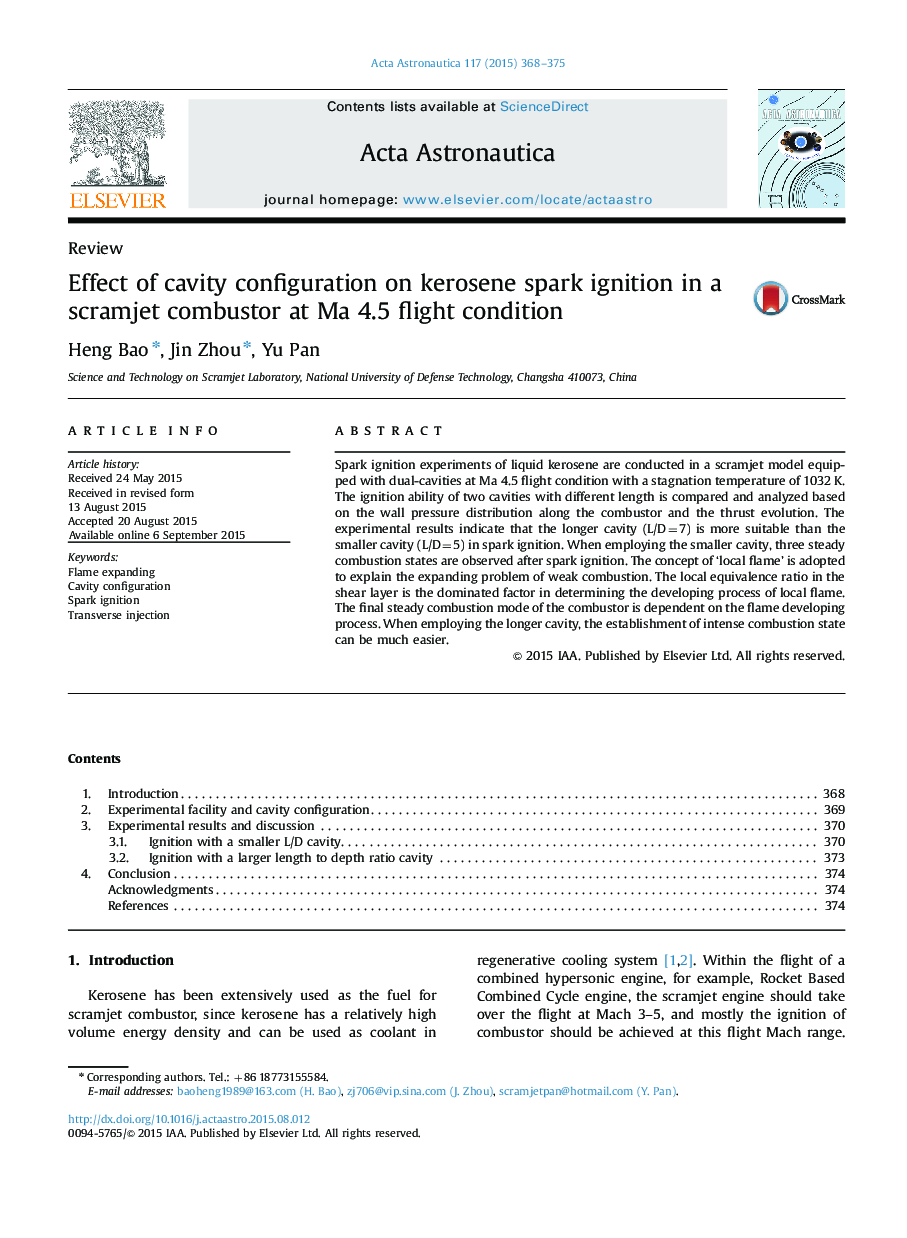| Article ID | Journal | Published Year | Pages | File Type |
|---|---|---|---|---|
| 1714349 | Acta Astronautica | 2015 | 8 Pages |
Abstract
Spark ignition experiments of liquid kerosene are conducted in a scramjet model equipped with dual-cavities at Ma 4.5 flight condition with a stagnation temperature of 1032Â K. The ignition ability of two cavities with different length is compared and analyzed based on the wall pressure distribution along the combustor and the thrust evolution. The experimental results indicate that the longer cavity (L/D=7) is more suitable than the smaller cavity (L/D=5) in spark ignition. When employing the smaller cavity, three steady combustion states are observed after spark ignition. The concept of 'local flame' is adopted to explain the expanding problem of weak combustion. The local equivalence ratio in the shear layer is the dominated factor in determining the developing process of local flame. The final steady combustion mode of the combustor is dependent on the flame developing process. When employing the longer cavity, the establishment of intense combustion state can be much easier.
Keywords
Related Topics
Physical Sciences and Engineering
Engineering
Aerospace Engineering
Authors
Heng Bao, Jin Zhou, Yu Pan,
